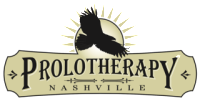PHYSICAL EXAMINATION IMPORTANCE
THE IMPORTANCE OF A PHYSICAL EXAMINATION
Most people do not believe that a simple physical examination can find ‘pain sources’ better than an MRI. That is because they think that ‘tenderness’ is due to some kind of ‘inflammation’, and the ‘real’ pain is due to abnormalities seen on the films. (Even in the case of an injury noted in a connective tissue structure, like a rotator cuff tendon that is partially torn, as noted on film, this is generally only PART OF the pain sources which will be noted on physical examination, but will be deemed the ‘entire’ problem based on the films. If you treat only a portion of the actual sources of symptoms, what is the chance that your shoulder will be pain-free following treatment?). But, if you understand that ‘tenderness’ is caused by stretch-induced small fiber nerve damage in these structures, you realize that this tenderness is present because of the abnormal ‘stretchability’ of the structure, and that this tenderness WILL BE PRESENT UNTIL these structures return to ‘load bearing’ status when enough collagen molecules have been added back to them so that you are no longer yanking on the nerve fibers and damaging them every time you use the structure. Then it occurs to you that you can not only use ‘tenderness’ as a reliable diagnostic tool, but you can even use it as a means of tracking and to assessing the results of therapy. And, you will find that when you treat ALL the symptom causing structures, your treatment results get better…a lot better, in fact…if you can remedy what is ACTUALLY WRONG, which is a lack of tensile strength in this set of structures. Now, what is the only treatment that does this non-surgically? And, if your operation only addresses ‘what is seen on film’, might your patient have a significant probability of continuing to have pain after surgery? If you have had surgery, and your pain did not fully resolve, might this be the reason?

